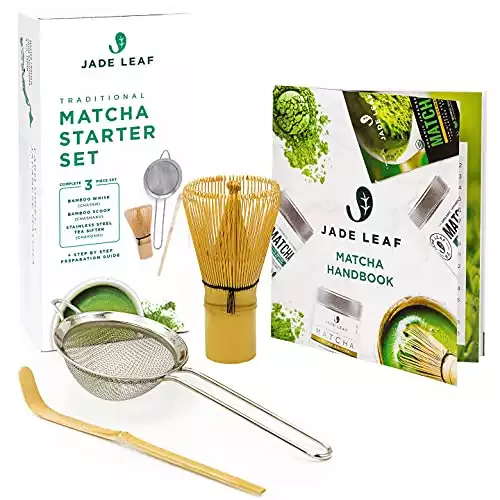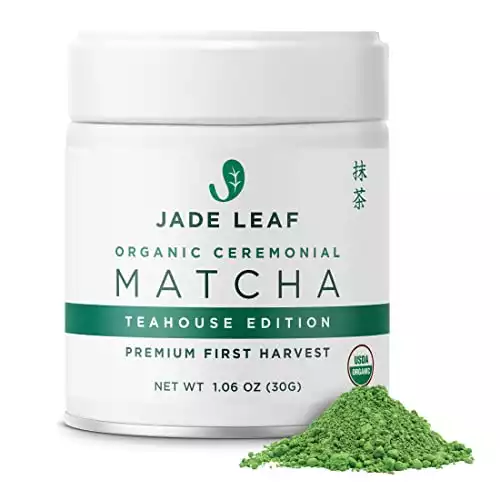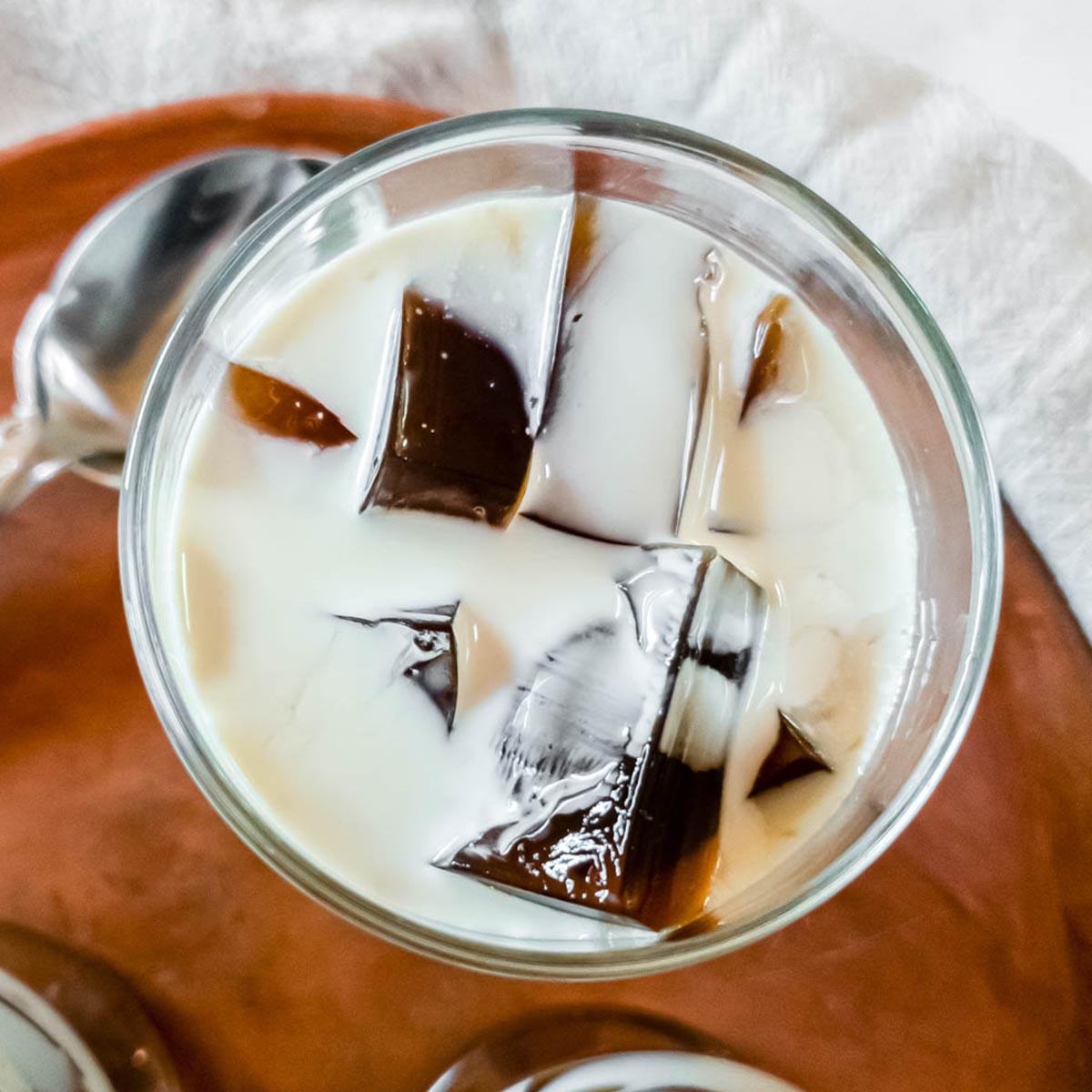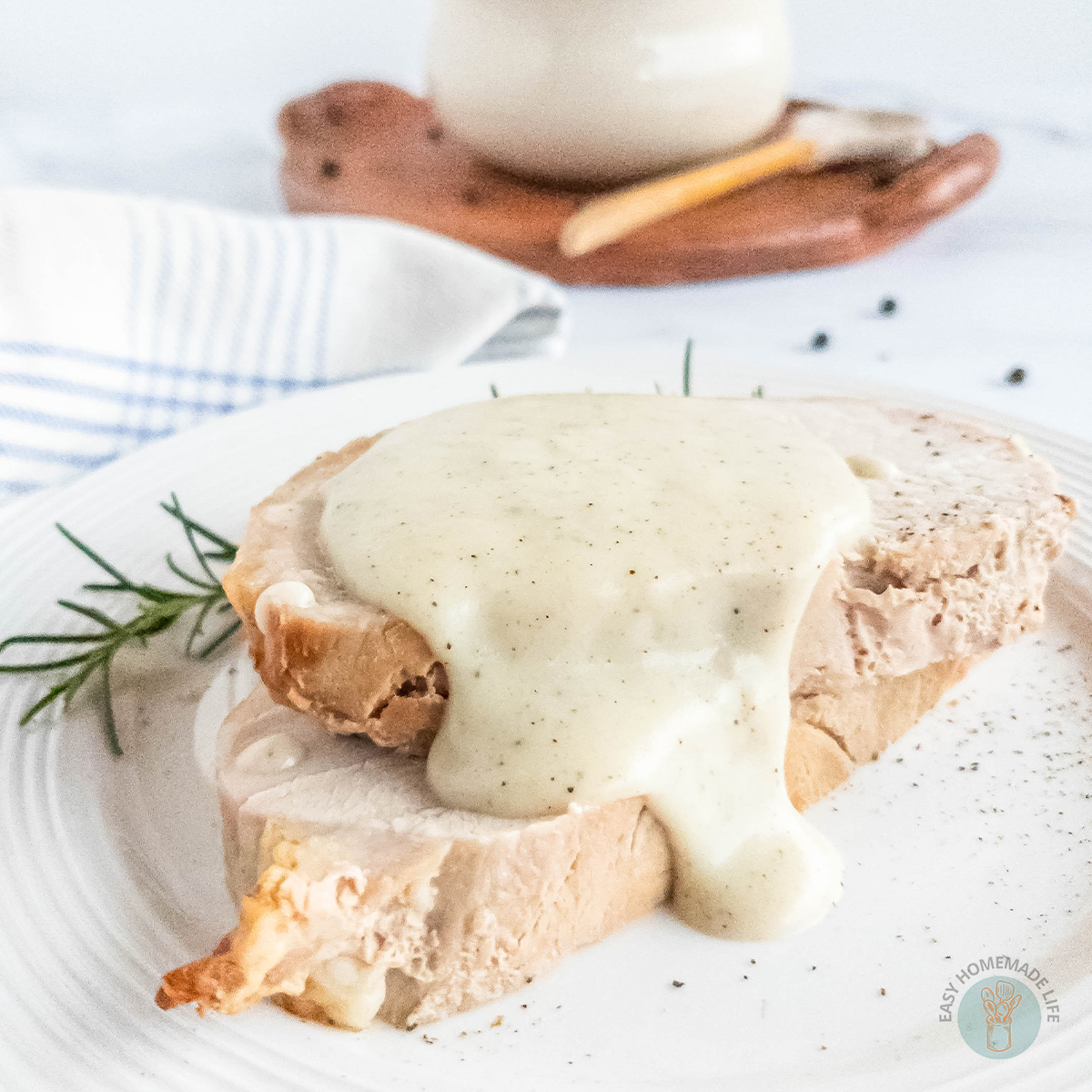How to Make Matcha Tea Perfectly + Why You Should
As a participant in the Amazon Services LLC Associates Program and other affiliate programs, Easy Homemade Life may collect a share of sales or other compensation from the links on this page. This comes at no additional cost to you, and all the prices and availability are accurate at the time of publishing.
Move over coffee, there’s a new morning pick-me-up in town and it’s called Matcha Tea. Read on to discover all the reasons to love this drink, how and where to buy it, and how to make it into a delicious hot or cold beverage.
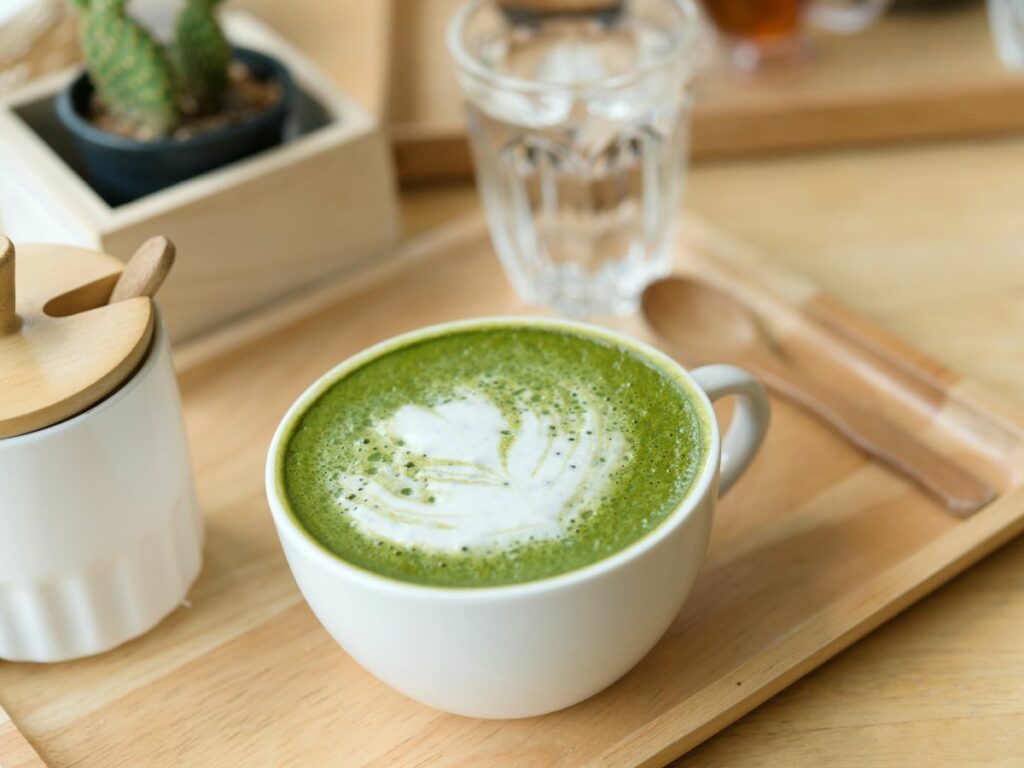
Like coffee jelly, matcha tea is another of my favorite Japanese treats. This traditional Japanese tea has recently gained popularity all over the world, and for good reason. It’s a flavorful, lightly caffeinated drink made from finely ground green tea leaves. And it packs a hearty dose of beneficial nutrients, too.
Enjoy your matcha hot or cold alongside your favorite sweet or savory snacks like black sesame cookies, red velvet cake, or mochiko chicken. Read on as we explore the different methods of making Matcha tea and how to make the perfect cup every time.
What Is Matcha Tea?
Matcha is a type of Japanese green tea made from powdered whole leaves of the Camellia sinensis plant. It has been a part of traditional Japanese tea ceremonies for centuries, but in recent years it’s become increasingly popular in Western cultures, too. You can choose from a wide selection of green tea drinks at Starbucks nowadays!
Matcha has a unique flavor, alluring bright green color, and numerous health benefits. Their tea leaves are grown in the shade for several weeks, which intensifies their green color, before they are harvested and then ground into a fine powder.
Why You’ll Love This Energizing Drink
There are dozens of reasons to love matcha. Here are a few:
- Packed with antioxidants: It’s known for its high levels of antioxidants, which can help protect your body from damage by free radicals.
- It’s a natural energy boost: Unlike coffee, which can leave you feeling jittery, the caffeine in matcha is released slowly, so you get a steady stream of energy that can help improve focus and concentration without causing a subsequent crash.
- Versatile: Matcha is delicious hot or cold, and works in a variety of recipes, from smoothies to baked goods like brownies.
- Beautiful: Thanks to its high chlorophyll content, matcha has a striking bright green color.
- It’s delicious: Let’s be real, the best reason to love something is that it tastes good. Matcha has a distinctive, delicious taste you’ll love.
The color is just as pretty in real life as in the pictures. Matcha powder is the secret ingredient in my naturally green sugar cookies. They are a bright and seasonal touch in dessert-themed Easter charcuterie boards and Christmas holiday cookie platters.
What Are the Health Benefits of Matcha?
Green tea has lots of health benefits, and these benefits are even more powerful when you consume the tea as matcha. This is because when you make regular green tea, you steep the leaves in hot water and then strain them out and discard them, so you only get the nutrients that have been infused into the water. When you drink matcha tea, you consume the whole leaf. Here some of the most interesting matcha benefits:
- It can help boost your metabolism: Some studies have found that matcha can help boost your metabolism, which can aid in weight loss.
- It can help reduce stress: Matcha contains L-theanine, an amino acid that can help reduce stress and improve focus.
- It’s good for your skin: The antioxidants in matcha can help protect your skin from damage caused by free radicals, which can lead to wrinkles and other signs of aging.
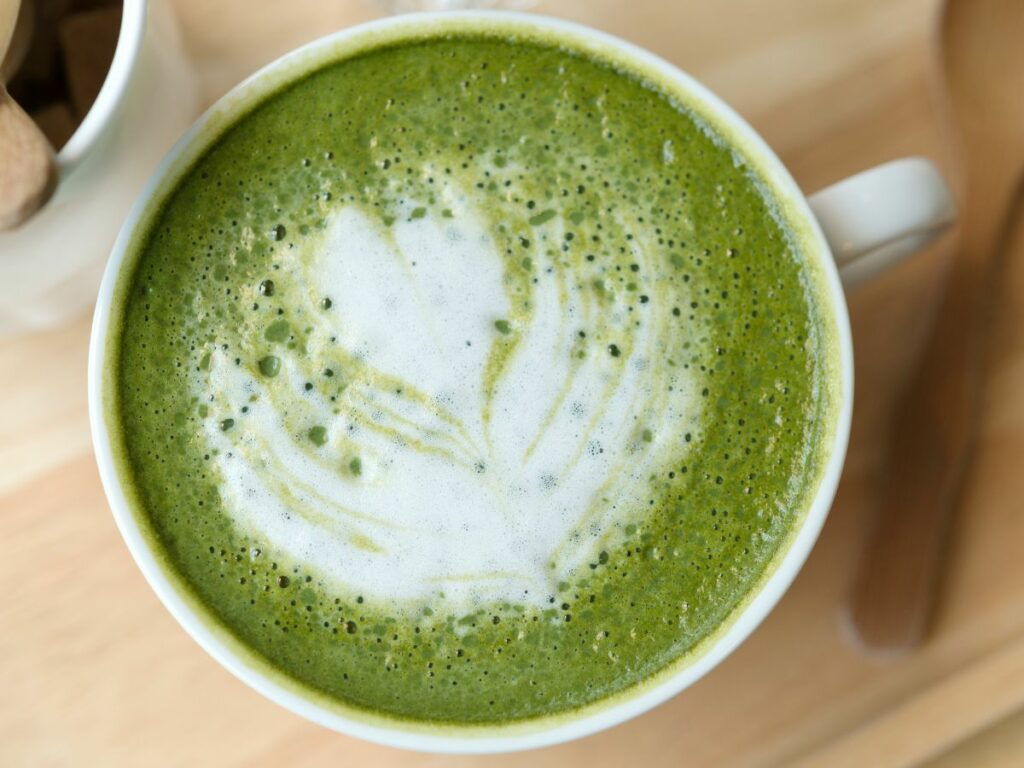
How To Make Matcha Tea
When you’re ready to make your own matcha green tea, choose whether you want to use the traditional Japanese method or the simpler, more modern method. Either way, making a cup of matcha is an art form, so it may take you a few tries to get it just right. Nail the basics before exploring more matcha drinks, such as matcha milk tea, which is delicious hot or cold.
Traditional Method
The traditional Japanese method for making a cup of matcha is steeped in history and culture and considered an art form. The ceremony is a way to express hospitality, respect, gratitude, and appreciate the beauty of nature and the simple things in life.
To make the perfect cup of matcha using the traditional Japanese method, you’ll need:
- A bamboo whisk (“chasen” in Japanese)
- A tea bowl
- A tea scoop
Try out this starter kit with all the equipment you need. There are several steps in the traditional method of making Matcha:
- First, prepare the tea bowl by wiping it with a damp cloth and warming it with hot water.
- Next, place the matcha powder in the bowl and add hot water (160–170°F or 70–80°C), using a specific amount of water for the desired strength of tea.
- Using a bamboo whisk, mix the powder and water together, using a back-and-forth motion until it becomes frothy.
- Pour the tea into small tea cups and serve to guests.
One of the key elements of the traditional Japanese tea ceremony is the attention to detail and the focus on the present moment. The tea master and guests take time to appreciate the appearance, aroma, and taste of the tea, as well as the beauty of the surrounding environment and the company of the guests.
Modern Method
The modern method is more straightforward and doesn’t require any special equipment. You can make a great cup of tea this way if you have good-quality matcha powder. But this method skips the mindfulness practices that accompany the traditional matcha method.
Here’s how to make the perfect cup of matcha tea using the modern method:
- Start by heating water to around 160-170°F (70-80°C).
- Take a teaspoon of matcha powder and add it to a cup.
- Add a splash of hot water to the cup and mix with a spoon to dissolve the powder.
- Add the rest of the hot water to the cup and mix well.
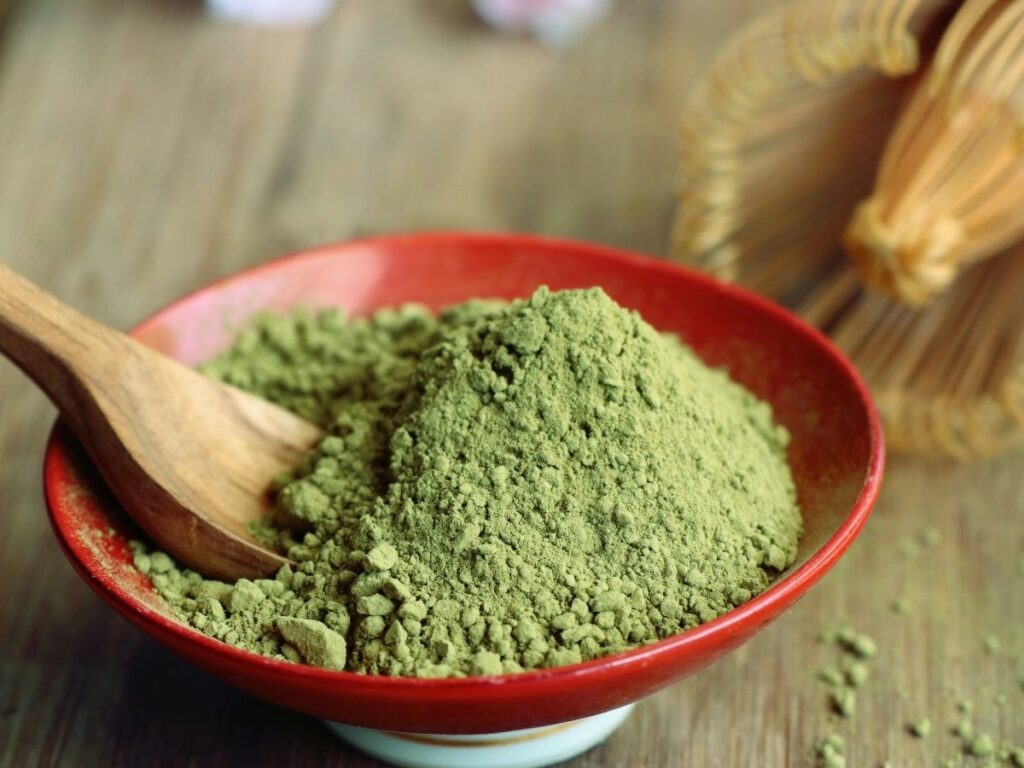
How and Where To Buy Matcha
When buying matcha, look for green tea powder that is vibrant green in color. This is a sign that the leaves are high-quality and fresh. Matcha loses its flavor and nutritional value over time, so check the packaging for a harvest or production date.
You can buy matcha at any Japanese or Asian grocery store. These stores often carry a variety of different brands at different price points. If not in the store, you can also purchase matcha online.
Finally, consider buying matcha directly from a tea farm or a supplier that imports Japanese matcha. This guarantees the authenticity, quality, and origin of the matcha. It also helps support the local farmers and the industry.
It’s important to note that the highest-quality matcha green tea powder, the crème de la crème, will always come from Japan. The birthplace of matcha tea is Uji, best known for its traditional conventional matcha. The region has the perfect altitude, soil, and conditions to produce the best matcha tea powder in the world.
Look for matcha powder sourced from Uji or other reputable regions, such as Kagoshima, famous for its organic matcha, and Nishio, known for its premium single-origin matcha. Also, make sure that the powder you buy meets quality standards like JAS (Japanese Agricultural Standards).
When purchasing powdered green tea matcha, consider the powder’s quality, price, and source. With some research and careful consideration, you can easily find a high-quality product that will provide delicious flavor and numerous health benefits.
How To Tell If It’s Authentic and High-Quality Matcha
I cannot stress enough the importance of purchasing only the highest-quality matcha if you want to reap its full benefits. You will encounter different kinds in the market, such as flavored matcha or matcha with fillers (powdered milk or sugar). You do not want these.
Thankfully, recognizing authentic matcha is easier than you think! Aside from a vibrant green color that indicates freshness, there are a few other signs to look out for to tell if the product is authentic:
Fine Texture
Authentic matcha tea powder is stone-milled, and the leaves are finely ground into a smooth powder. When you rub it between your fingers, it should be smooth and silky, similar to the texture of talc or confectioners’ sugar. You can also perform the “paper test”—just grab a pinch of the powder and smear it onto a piece of white paper. The powder is good quality if it leaves a long, clean line on the paper.
The powder should also be free of lumps and grittiness so that it dissolves quickly. Textured powder won’t dissolve as well, and you may have lumps in your tea.
Strong Aroma
A high-grade matcha tea emits a vivid, strong, and sweet aroma. Think freshly cut grass or seaweed. You should be able to smell the bitterness of the antioxidants and the sweetness of the amino acids.
Sweet Aftertaste
Matcha green tea powder is naturally bitter, but the high-quality kind should leave a sweet aftertaste. The sweet smell and taste of powder come from the amino acids that build up on the leaves when they’re properly shaded. The powder should have the perfect balance between bitterness and sweetness. If all you can taste is bitterness, it’s not premium quality.
Bubbly Froth
Many people want to taste matcha tea because it makes a beautiful, creamy, and frothy drink. After a whisk, high-grade matcha will produce a frothy and foamy layer on top, while low-grade powders will only give a thin layer with big air bubbles. So, the more foam it creates, the better the quality of the matcha.
Price and Packaging
We all know that authentic matcha isn’t cheap, so if you encounter a product with a ridiculously low price, it’s an indication that it’s low-grade or has fillers. Additionally, good-quality green tea powder is typically sealed in airtight cans or resealable bags to prevent damaging the tea profile and preserve its freshness.
How To Store Matcha Powder
Matcha is sensitive to light, air, and heat. Store it in a cool, dark place to preserve the taste and color. Here are a few tips for storing your matcha:
- Keep it in an airtight container
- Store it in a cool, dark place
- Avoid storing it in direct sunlight or near heat sources
- Use it within 3 months of opening
The Final Word
Matcha tea is a delicious and healthy beverage that’s easy to make, beautiful, and good for you, too. Now that you know how to make matcha tea, go out there and enjoy a perfect cup of this sippable treat.
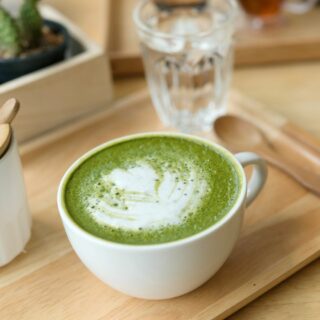
How To Make a Perfect Cup Of Matcha the Easy Way
Ingredients
- 1 teaspoon high quality matcha powder
- 1 cup hot water
Instructions
- Heat water to around 160-170°F (70-80°C).
- Take 1 teaspoon of matcha powder and add it to your cup.
- Add a splash of hot water to the cup and mix with a spoon to dissolve the powder.
- Add the rest of the hot water to the cup and mix well. Enjoy!
Notes
Nutrition
Portions of this article originally appeared on Food Drink Life.


